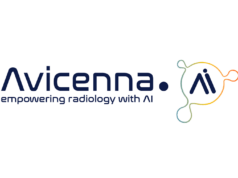
A low Alberta stroke program early CT score (ASPECTS) of 4–5 has been deemed the threshold for mechanical thrombectomy, with no benefit elicited in those with ASPECTS 0-3. Moreover, the clinical outcome in low ASPECTS may be age dependent, with negligible benefit achieved in those above 75 years of age. These conclusions, presented by Osama Zaidat (Mercy Health, St Vincent Medical Center, Toledo, USA) at the Society of NeuroInterventional Surgery’s (SNIS) annual meeting (22–25 July, Miami, USA), are indicative of the low ASPECTS subgroup identified through the STRATIS registry.
“STRATIS has provided an opportunity to look at the patients that were enrolled outside the guidelines, patients with low ASPECTS. And, the good thing about CT ASPECTS from this registry is that they were core lab adjudicated,” said Zaidat.
He highlighted that ASPECTS 0–5 was associated with a lower functional outcome, while ASPECTS 0–3 have even lower rates of good outcome (10%), with a 60% rate of mortality. Further, patients within the ASPECTS 4–5 group had a good clinical outcome of 33%, with a mortality rate (MR) of 23%. In terms of the intersection between age and low ASPECTS, patients above the age of 75 experienced little benefit (mRS 0–2: 0%, MR: 58%).
Describing the STRATIS patient population, he said that 984 were enrolled in the STRATIS Registry, 763 patients had a core lab ASPECTS read for their CT scan, and 57 (7.5%) had an ASPECTS of 0–5. “So it is a small sample size, reflecting that many neurointerventionalists are following the guidelines and do not treat many patients with ASPECTS less than six. However, this subgroup analysis provides an opportunity to explore the clinical outcome of these patients.”
He noted that the investigators further dichotomised these patients into ASPECTS scores of 0–3 and 4–5, with 10 and 47 patients in each group, respectively, to identify the threshold below which MT may be futile.
Zaidat said: “High ASPECTS patients were more likely to be younger, and they probably do not have as many collaterals. Diabetics are more common with low ASPECTS scores.”
He added, “The stroke at baseline was more severe (average NIHSS of 22 for ASPECTS 0–3 vs. 17 for ASPECTS 6–10), meaning they were more likely to have general anaesthesia. And, there is a delay in groin-to-puncture times which may be related to the anaesthesia, the general management, or the severity of stroke [for low APSECTS patients]. You would think that a severe stroke would present early, but for some reason they presented late, which could be related to being more likely wake up strokes.” Moreover, patients with ASPECTS 0–5 were more likely to have an internal carotid artery occlusion compared to those with higher scores (ASPECTS 0–3: 50%; ASPECTS 4–5: 40.4%; ASPECTS 6–10: 22%).
Ultimately, Zaidat surmised that ongoing prospective randomised controlled trials will address this specific group of patients. Alluding to those currently underway, he pointed to the TESLA (Thrombectomy for emergent salvage of large anterior circulation ischaemic stroke) USA and EU trial, where patients (n=300) with ASPECTS 2–5 within 24 hours are to be selected and randomised to endovascular therapy plus medical management, or the latter alone.
Second, he noted that the TENSION (Efficacy and safety of thrombectomy in stroke with extended lesion and extended time window) trial will include patients with ASPECTS 3–5, within zero to 12 hours from last known well or an unknown time onset. Finally, while the LASTE trial has not yet started recruiting, Zaidat said that it intends to evaluate acute mechanical revascularisation in an ASPECTS 0–5 patient population with large vessel occlusion within seven hours after stroke onset or last known well.













